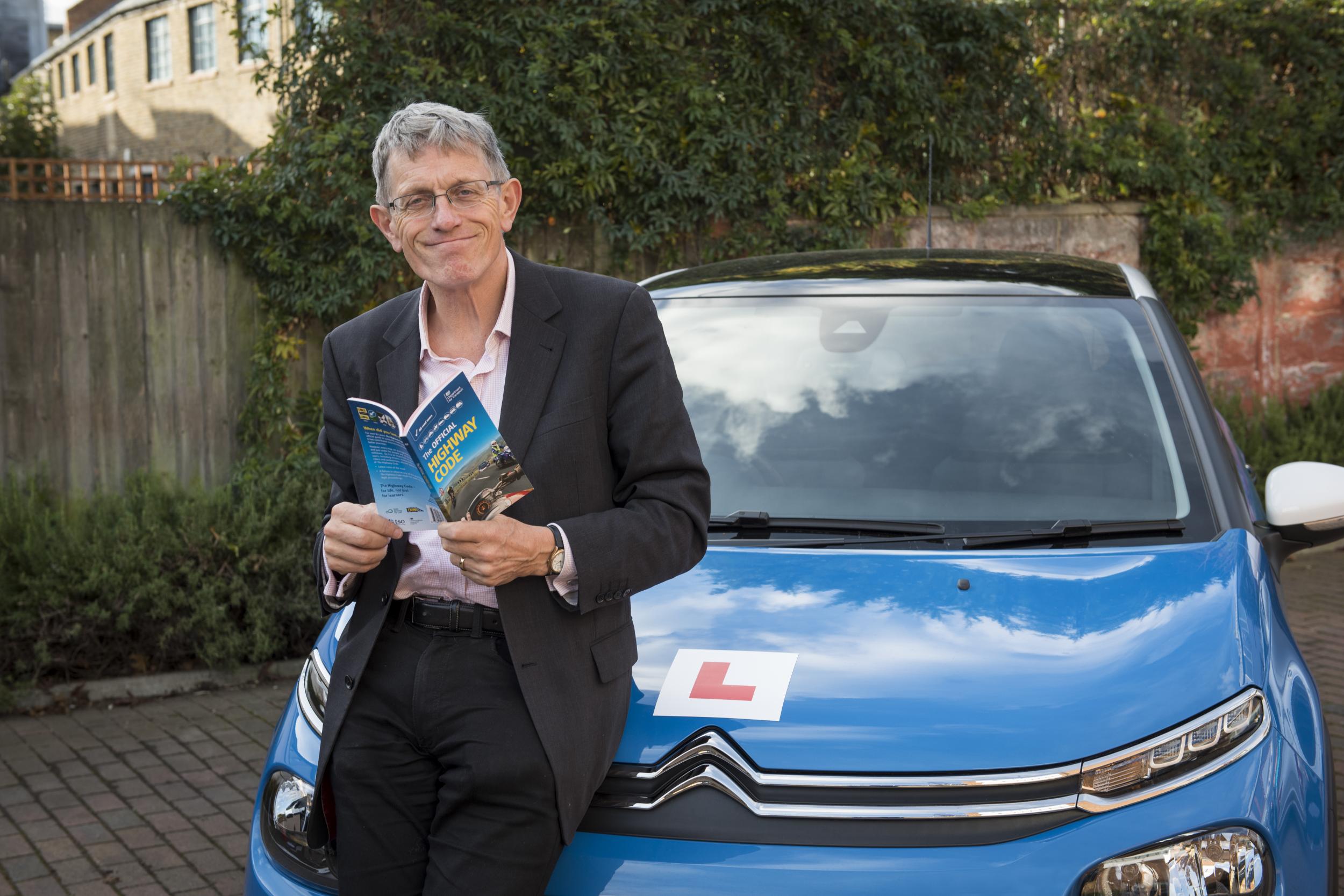New driving test: What it's like to take revamped practical examination
Can our old dog learn the new tricks of 21st-century motoring?

Mirror-signal-manoeuvre: one wet December morning in Coventry in the late Seventies, I followed the learner-driver’s mantra and fluked my way through a driving test at my first attempt.
How different were those times? The car was an Austin Allegro, one of the worst vehicles ever created by Britain’s then-decrepit motor industry; and, as the examiner sat in the passenger seat writing out the “pass” slip, I rolled, lit and smoked a cigarette.
Four decades on, I find myself facing the same ordeal on a bright winter’s afternoon in Kingston-upon-Thames, ahead of the biggest shake-up of the practical test coming into force on Monday.
But besides society’s attitude to smoking, much else has changed for the better. The roads are far safer, though crashes are still the leading killer of young people. And the car is a neat, nippy Citroën C3 with a round steering wheel, rather than the Allegro’s square one.
I am ignoring the examiner, Richard Gladman, even though he is Britain’s top motoring skills expert, as head of driving and riding standards at IAM RoadSmart, the road safety charity.
Instead, I am listening intently to the sat nav, which from today becomes an essential part of the driving test. It is one of several changes to the decades-old test which, says the Driver and Vehicle Standards Agency (DVSA), “are designed to make sure new drivers have the skills they’ll need to help them through a lifetime of safe driving”.
“Can you read that number plate?,” asks Richard before the road test begins, pointing to a vehicle parked some distance away. Next, after a careful M-S-M, I set off into the suburban traffic to see how the test is changing (and how many bad habits I have picked up over the years).
The “independent driving” section of the test has been doubled, from 10 to 20 minutes, with the extra time allotted to a sat nav-guided section. The examiner, not the learner driver, sets up the device, though I think there is a case for including an element of in-car technology.
The idea of the sat nav section is to make the test more like real life and, according to the DVSA, oblige learners “to experience more challenging driving environments i.e. rural roads with fewer traffic signs”.
You would be hard pressed to find an especially rural setting within a mile of the Kingston one-way system, but the chosen route required concentration – with the added hazards of a couple of awkward turns, badly parked cars and some dreadful driving by other road users. (Just a thought, but if examiners could strip errant motorists of their licences I bet standards would soar overnight.)
Driving instructors and their students have been adapting to the new rules, but so that nothing can be taken for granted the DVSA says: “One in five driving tests won’t use a sat nav. You’ll need to follow traffic signs instead.”
On my first test, the “three-point turn” took me five manoeuvres. Happily, under the new system I do not have to attempt the same performance. Nor do I have to back the car into a minor road without hitting the kerb or a stray animal.
“The ‘reverse around a corner’ and ‘turn-in-the-road’ manoeuvres will no longer be tested,” says the DVSA – adding: “You should still be taught them by your instructor”.
Instead there will be one real-life challenge chosen from three possibilities: driving into a parking bay and backing out; parallel parking; or pulling up on the right-hand side of the road, reversing for two car lengths and rejoining the traffic.
The terror of the first test accompanied me all the way around the test track, with the added alarm of suddenly being asked by Richard to demonstrate how to wash the windscreen. It was a 50-50 bet as to whether I would activate the washer or flash the headlights, but fortunately the Citroën is logically laid out and I guessed right.
You are allowed 15 minor errors before you fail a test (one big mistake, such as speeding or answering your phone, and you’re done, of course). Like, I suspect, many motorists, I regarded that as a ridiculously generous allowance.
Despite trying as hard as I could, I still amassed seven errors in Richard’s expert judgement, but “passed” nonetheless. Most of those errors involved making assumptions about what other road users would do.
Never assume. And, new drivers, in real life though not on your driving test: never completely trust your sat nav.
Subscribe to Independent Premium to bookmark this article
Want to bookmark your favourite articles and stories to read or reference later? Start your Independent Premium subscription today.

Join our commenting forum
Join thought-provoking conversations, follow other Independent readers and see their replies